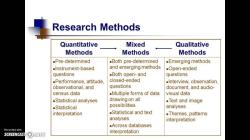How to present algorithms in a paper?
Presenting algorithms in a research paper effectively is crucial for clear communication of your work to readers. Algorithms are often a central part of research papers in fields such as computer science, machine learning, and other technical disciplines. Here are some guidelines on how to present algorithms in your research paper:
Algorithm Description:
Clear and Concise Language: Use clear and concise language to describe the algorithm. Avoid unnecessary jargon or technical terms that your target audience may not understand.
Pseudocode or Flowcharts: Presenting the algorithm using pseudocode or flowcharts can help make it more accessible. Pseudocode is a high-level, human-readable description of the algorithm's steps, while flowcharts provide a visual representation of the algorithm's logic.
Step-by-Step Explanation: Provide a step-by-step explanation of the algorithm's operation. Explain each step in plain language, and if necessary, provide additional clarifications for complex operations.
Variable Definitions: Clearly define all variables, symbols, and notations used in the algorithm. If you introduce new variables, explain their purpose and how they relate to the algorithm's logic.
Mathematical Formulation:
- If your algorithm involves complex mathematical operations, provide the necessary mathematical formulations and equations. Use LaTeX or a similar typesetting system for mathematical symbols and equations to ensure proper formatting.
Pseudo Code:
Use a consistent and easily readable format for your pseudocode. Indentation and proper structuring can make it easier for readers to follow.
Include comments in your pseudocode to explain the purpose and logic behind each step. Comments should provide insights into why certain decisions or calculations are made.
Consider providing pseudocode for both the main algorithm and any important subroutines or functions.
Examples and Illustrations:
Include illustrative examples to demonstrate how the algorithm works on sample data. These examples can help readers better understand the algorithm's behavior.
If applicable, include input-output examples to showcase how the algorithm processes data and produces results.
Complexity Analysis:
Provide an analysis of the algorithm's time complexity, space complexity, and any other relevant computational complexities. Explain how these complexities were derived.
Discuss the best-case, worst-case, and average-case scenarios if applicable.
Related Work and References:
- If your algorithm builds upon or is inspired by previous work, make sure to provide appropriate citations and references to the prior research.
Experimental Validation:
If your research paper includes empirical results or experiments involving the algorithm, describe the experimental setup, datasets used, and results obtained.
Discuss the performance metrics used to evaluate the algorithm's effectiveness and compare it to other algorithms if relevant.
Figures and Tables:
- Use figures and tables to visually present important aspects of the algorithm, such as data structures, key steps, or performance comparisons.
Error Handling and Edge Cases:
- Address error handling and edge cases explicitly in your algorithm description. Explain how the algorithm handles exceptional situations or unexpected inputs.
Review and Proofreading:
- Carefully proofread the algorithm description for clarity, correctness, and consistency with the rest of the paper. Ensure that there are no ambiguities or errors in your algorithm presentation.
Testing and Validation:
- Whenever possible, provide examples or results from testing and validation to demonstrate the algorithm's correctness and effectiveness.
Peer Feedback:
- Seek feedback from peers, mentors, or colleagues to ensure that the algorithm description is clear and comprehensible to a broader audience.
Remember that the goal is to make your algorithm accessible to readers who may not be experts in your specific field. Effective communication is key to ensuring that your research paper is informative and understandable, allowing others to reproduce your work or build upon it.












